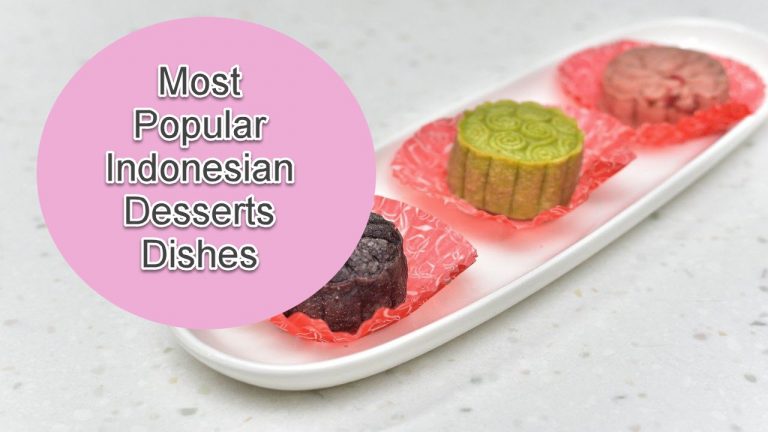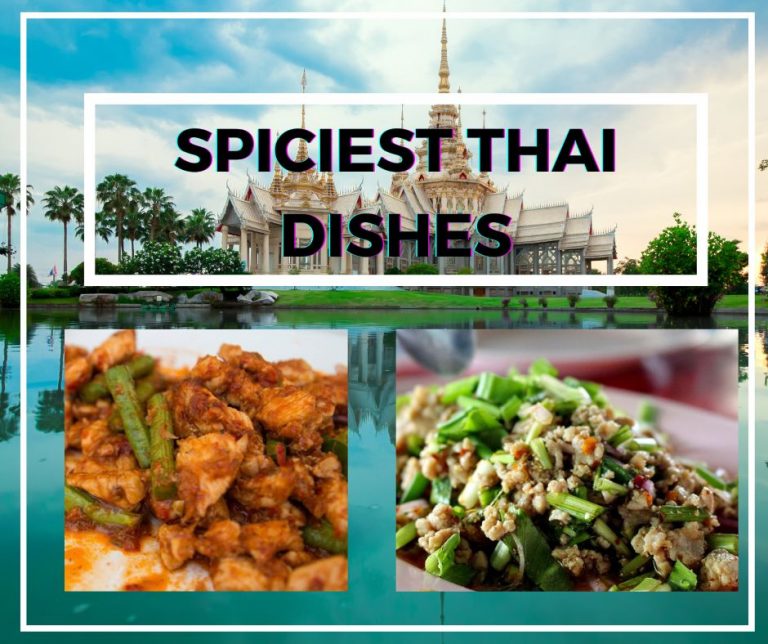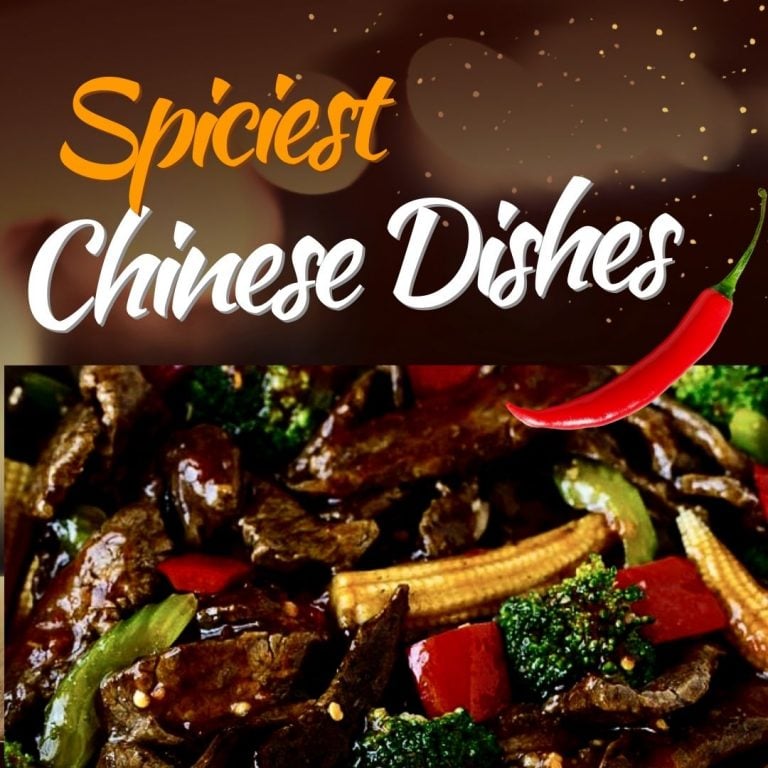12 Spiciest Indonesian Dishes
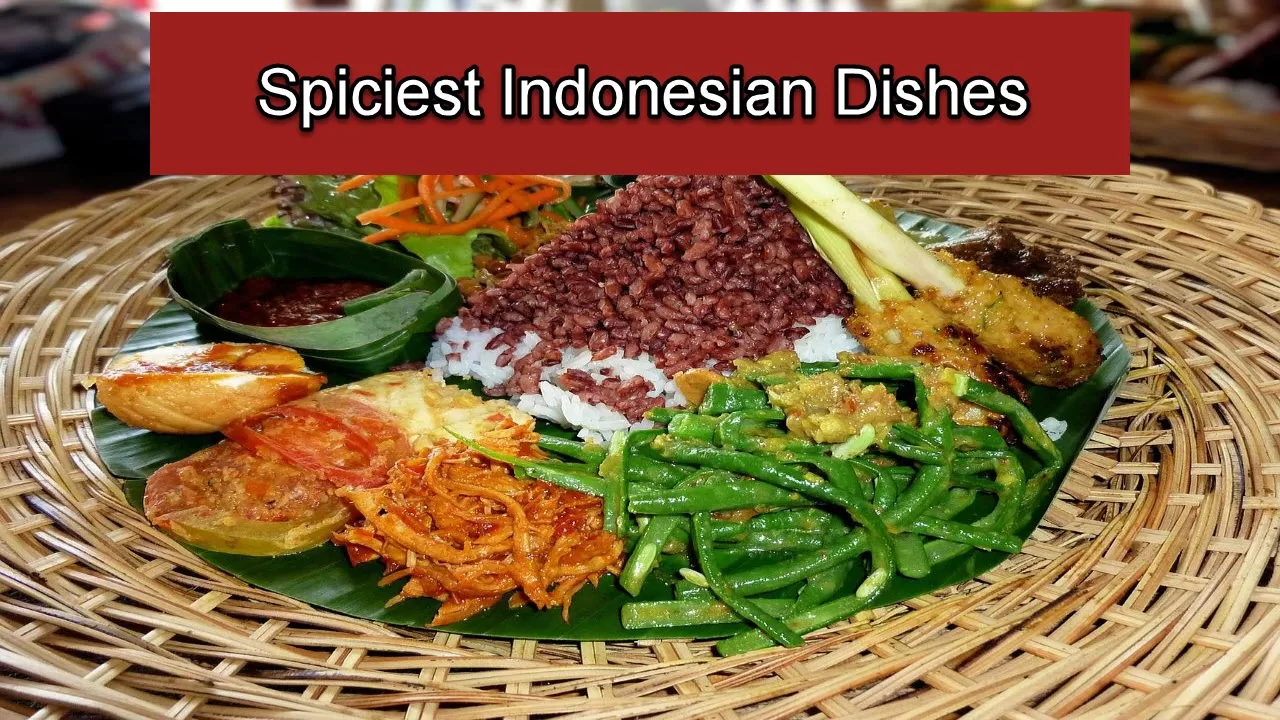
Have you ever tried any Indonesian food? If you visit Indonesia, it is encouraged to explore a variety of Indonesian cuisine, from everyday snacks to specialty dishes. Everything is certainly healthy, accessible, and delectable.
Indonesian food typically has rich flavors that are derived from specific ingredients and a combination of bumbu spices. Indonesian cuisine is known for its robust flavors, which are mostly savory, hot, and spicy as well as a blend of fundamental flavors like sweet, salty, sour, and bitter. Basically, Indonesians love spicy foods. Sambal, an Indonesian chili hot and spicy sauce with a variety of optional components, most notably shrimp paste, shallots, and others, is a standard condiment at all Indonesian tables since the majority of Indonesians prefer hot and spicy meals.
Check out the spiciest dishes in Indonesia. If you are interested in learning more about Indonesian cuisine and wondering how they taste like, scroll down and continue reading.
Spiciest Indonesian Dishes
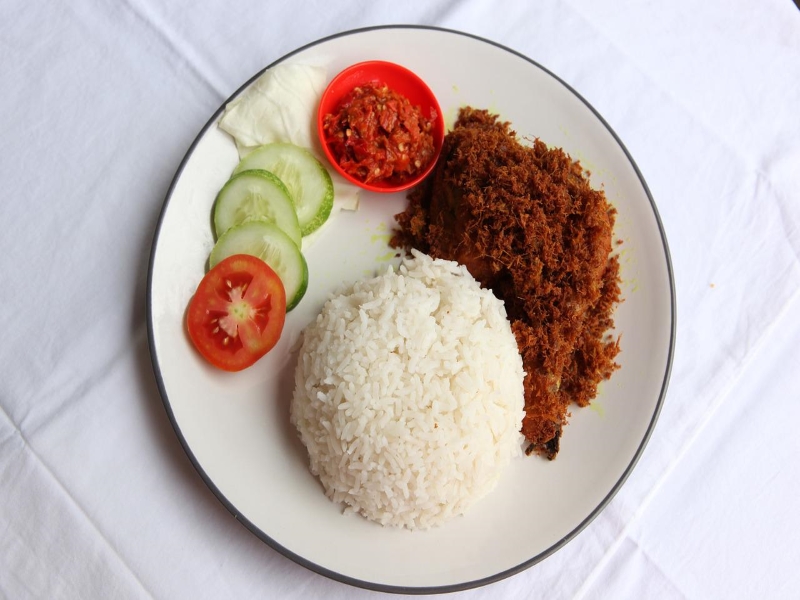
1. Penyetan/ Ayam Penyet
A popular spicy Indonesian food, Ayam Penyet, is from the East Javanese cuisine. It is a fried chichekn that has been softened by being pounded with a pestle and mortar. It is served with sambal, cucumber slices, fried tofu, and tempeh.
The spicy sambal that goes with ayam penyet is well-known for being prepared with a blend of chilies, anchovies, tomatoes, shallots, garlic, shrimp paste, tamarind, and lime juice. The combination is then crushed into a paste to be consumed with the meal.
There is simply no way to prevent the spiciness of this meal with the chili sauce and the pounded chicken flesh. As the chili sauce for this East Java delicacy overflows the plate, it creates a mouthwatering colored red mess and a pungent scent that only indicates to how hot the dish will be. Fried chicken, tofu, and tempeh are generally used by Penyetan for sambal on the within and outside.
Ayam penyet is now often enjoyed in Singapore, Malaysia, Brunei, Indonesia, and Malaysia. Southeast Asia has seen a significant increase in demand for it, and several franchise chains have developed there, serving the dish along with other delicacies from Indonesia.
This spicy food is best paired with warm rice.

2. Rujak
Rujak is a fruit salad dish with Javanese origin that is popular in Indonesia, Singapore, and Malaysia. The most popular variation is a salad made up of sliced fruit and vegetables that is served with a hot palm sugar dressing in all three nations. Because of the sweet, hot, and spicy dressing created from crushed chillies, palm sugar, and peanuts, it is frequently referred to as tangy and spicy fruit salad.
In Indonesia, it is commonly known as Rujak buah, or rujak manis (sweet rujak). Slices of various tropical fruits, such as jambu air or water apple, pineapple, unripe mangoes, bengkoang or jicama, cucumber, kedondong, and raw red ubi jalar or sweet potato, make up the traditional recipe for Indonesian fruit rujak. Green apple, belimbing or starfruit, and jeruk Bali or pomelo variations from Malang are occasionally included. The ingredients for the bumbu rujak dressing include water, salt, bird’s eye and red chillies, terasi or prawn paste, gula jawa or palm sugar, asem jawa or tamarind, and crushed peanuts. Basically, the majority of recipes call for a variety of pineapple, mango, papaya, and other fruits as well as at least 5–10 strong cayenne peppers. The spicy food has all of the fruits, which have been diced into bite-sized pieces.
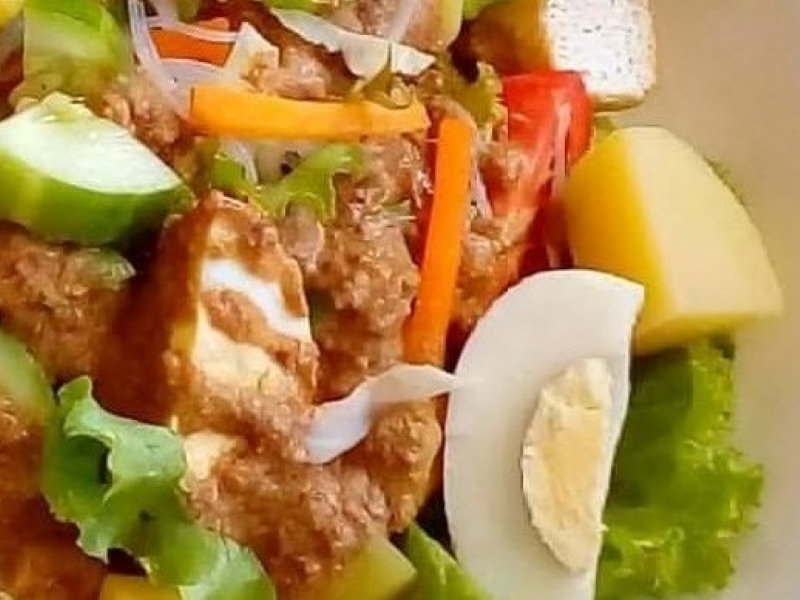
3. Gado–Gado
Served with a peanut sauce dressing, gado-gado is an Indonesian salad made up of raw, barely cooked, blanched or steamed vegetables and hard-boiled eggs, boiled potatoes, fried tofu, bean sprouts and tempeh, and lontong or rice wrapped in a banana leaf.
Gado-gado was marketed as one of Indonesia’s five national foods in 2018 together with soto, sate, nasi goreng, and rendang.
Gado-gado is commonly accessible and has local variations practically everywhere in Indonesia. Given that it is most common in Java’s western regions, it is believed to have been a Sundanese dish at one time, which includes Jakarta, Banten, and West Java provinces. The spicy dish, which is more popular in Central and East Java, is a slightly similar meal made with veggies and peanut sauce.
One of the nutritious dishes that you may eat even if you are limited in funds is gado-gado. Gado – Gado is rich in fiber and contains vitamins that the body needs. Indonesian Christmas food has a genuine taste.
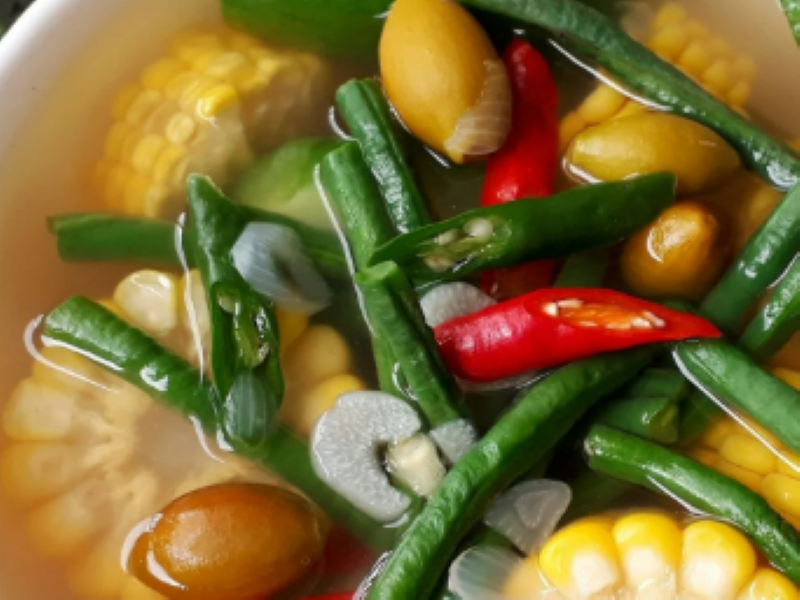
4. Sayur Asam
Sayur Asem or Sayur Asam is a vegetable soup from Indonesia. It is a well-known Southeast Asian cuisine made of vegetables in tamarind soup that has its origins in Sundanese cuisine.
This dish’s refreshing sweet and sour taste goes well with fried or grilled foods like salted fish, ikan goreng, ayam goreng, and lalapan, a type of vegetable salad that is often served raw but may also be cooked and is normally eaten with steamed rice and sambal terasi chili paste.
The Sundanese population of West Java, Banten, and the Jakarta area is where the dish originated. It is generally recognized that it is a part of Betawi daily diet and Sundanese cuisine.
This Indonesian vegetable tamarind soup is one of the spiciest foods there is. Tamarind soup has a range of nutrients because it is made up of different components. Only corn, peanuts, long beans, pumpkin, and eggplant are available locally as ingredients. Simply bring water to a boil in a skillet, add the acid, salt, sugar, and onion slices to taste. Then, add the remaining veggies. You can serve the tamarind vegetable soup with fried tempeh, chili sauce, and other veggies.

5. Mie Aceh
Acehnese curry spicy noodles are known as mie aceh or mi aceh, or simply “Aceh noodles.”
Slices of beef, goat, lamb, mutton, and other meats are served with the thick yellow noodles, along with shellfish like crab or shrimp. They are offered in a curry-like broth that is thick, hot, and spicy. Black pepper, red chili pepper, shallot, garlic, cardamom, caraway, cumin, and star anise make up the bumbu spice blend. Bean sprouts, tomato, cabbage, and celery are cooked along with the noodles and seasonings. The thick yellow noodles used in Mie Aceh are often the same size as Japanese udon noodles. The majority of the noodles at the mie Aceh restaurant are homemade to maintain their authenticity.
There are two types of mie aceh: mie aceh kuah, which is soupy, and mie aceh goreng, which is stir-fried and dry version. Additionally, there are two alternatives for the noodle’s ingredients: meat (beef, lamb, or mutton) or seafood (shrimp or crab). Basically, Aceh noodles are typically served with emping, peanuts, cucumber, sliced shallots, fried shallots, and a splash of kaffir lime juice.

6. Ayam Betutu
Ayam Betutu is a Balinese dish that comprises filled and spice-coated whole chicken that is steamed or roasted.
Chilis, shallots, ginger, and other ingredients are used in the seasoning. The chicken is then wrapped in banana leaves and ideally roasted or steamed for a full 24 hours. This traditional dish is available on the menus of high – end hotels and restaurants in Bali and is well-liked by travelers. This spicy dish is best served with sambal matah from Bali.
The spice mixture is termed as bumbu, or betutu(Balinese term). Bumbu is made up of finely crushed shallots, garlic, turmeric, ginger, wild ginger, galangal, candle nuts, chili peppers, shrimp paste, and peanuts. On unleash its flavor, the betutu spice paste is sautéed in coconut oil before being applied to chicken. Plecing kangkung, crispy-fried peanuts, and sambal terasi are examples of typical side dishes.
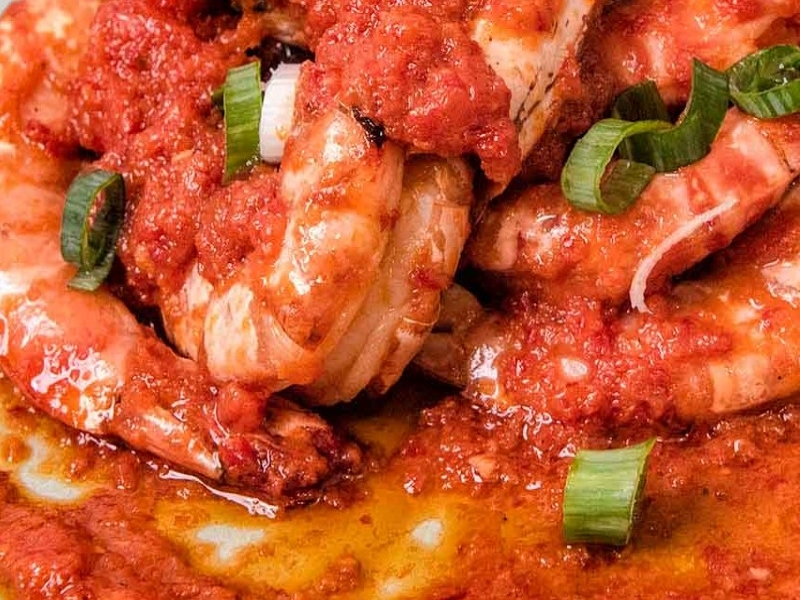
7. Balado
Balado is another spicy Indonesian food.
Anything may serve as the primary ingredient as long as there are several chilies. The ingredients resemble sambal spicy chili paste quite a bit. However, balado chili sauce is typically combined and stir-fried along with its primary components and regarded as a meal, unlike sambal, which is frequently considered as a separate dipping condiment. Fish (which are whole or cutlets), chicken, fried boiled eggs, fried meat, eggplant, or potatoes can all be prepared with balado. Anyone would be tempted to test their palate’ threshold for heat given the appealing combination of the devilishly red hue and pungent smell.
The Minang cuisine of West Sumatra, Indonesia, uses this particular hot and spicy bumbu (spice mixture), and it has subsequently spread to other parts of Indonesia and Malaysia, particularly Negeri Sembilan. The ingredients for balado sauce are stir-fried in coconut or palm oil with ground red hot chili pepper, garlic, shallot, tomato, and kaffir lime (leaves, fruit, or both).
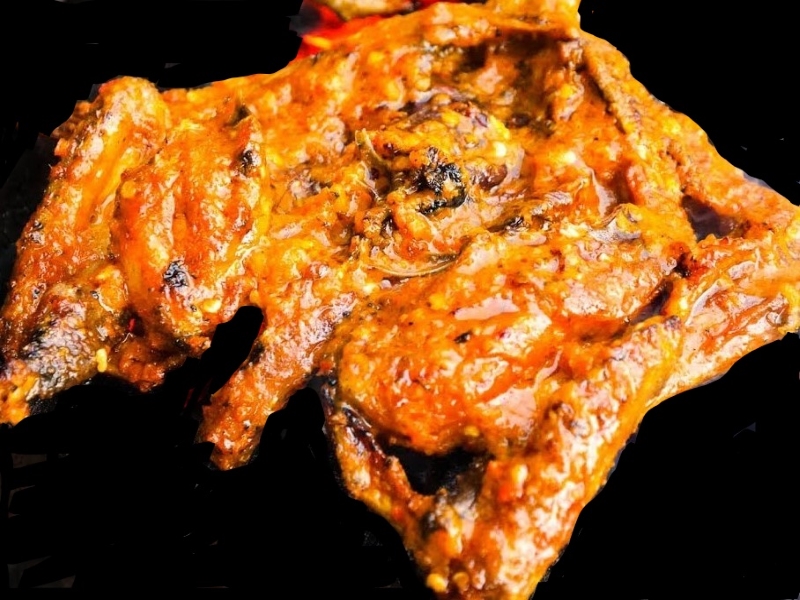
8. Ayam Taliwang
Originating from Taliwang in West Nusa Tenggara, Indonesia, the Ayam Taliwang is a spicy ayam bakar (grilled chicken) dish.
Garlic, shallots, shrimp paste, and a significant quantity of chili peppers are used to season the chicken. Young free-range chickens, which tend to be leaber than those grown for their meat in restricted environments, are the only poultries used in ayam taliwang, therefore they are frequently given whole even for individual diners.
Chicken, ideally free range, is sliced and cleaned before being grilled to make ayam taliwang. Halfway through grilling, it is taken off the heat and pounded with a pestle to make it tender. It is then submerged in frying oil, an then then coated with a hot sauce made of garlic, chili, and shrimp paste. After that, it is grilled or fried to order.
Ayam Taliwang is frequently served with a serving of plecing kangkung, a dish of water spinach topped with sambal plecing, for an added kick of heat. Due to the inclusion of tomatoes in the mixture, which causes a rather watery texture, this particular sambal is famous.
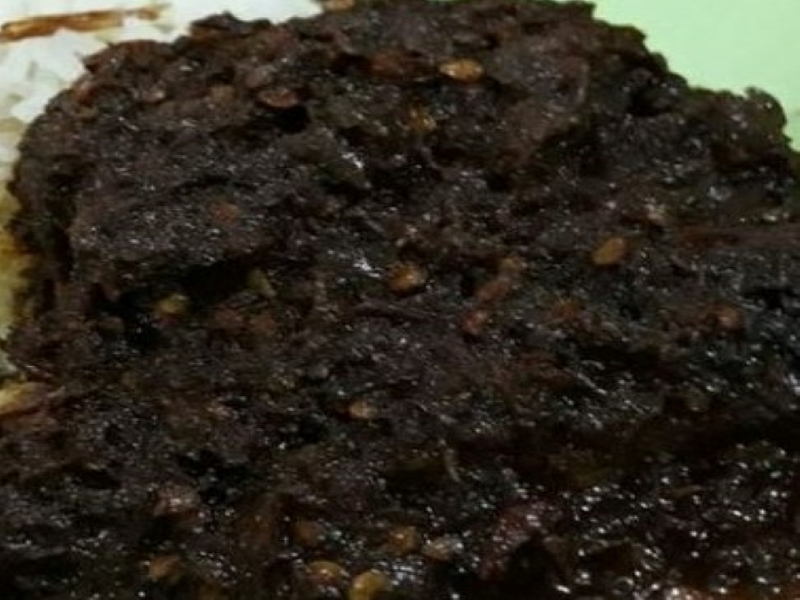
9. Bebek Madura
Bebek Madura is a fried duck with darkened sambal. In Indonesia, people love to make this distinct Madura duck dish. Bebek madura’s dark sauce is really, really spicy. The lengthy marinating procedure, which includes a plethora of spices, gives the food its rather dark color. The spice contains pepper, shallots, and chilis, which provide a tart flavor. Warm rice and still another sambal for an additional spice are offered with the crisp, delicate duck.
Nowadays, serundeng, a side dish of salty, crunchy coconut flakes that pairs nicely with the blackened sambal, is frequently served with bebek Madura.
10. Rica Rica
In the Manado cuisine of North Sulawesi, Indonesia, there is a sort of hot and spicy bumbu or spicy mixture, from Southeast Asia called rica-rica. Red, green, and bird’s eye chilies are chopped or ground up heavily in Rica-rica, along with shallots, garlic, ginger, and a small amount of salt and sugar. These ground spices are sautéed in coconut oil and combined with lime juice, lemongrass (bruised), and lime juice. A common hot and spicy flavor for grilling meat, fish, or poultry in Indonesia.
The Minahasan consume rica-rica with nearly anything they can find, including cakalang (skipjack tuna), beef, and duck, though chicken is the most commonly used component.
11. Seblak
Seblak is an Indonesian dish from West Java that is popular in Sundanese cuisine. It is cooked made with wet krupuk, a type of traditional Indonesian cracker, which is fried in a spicy sauce with meat or poultry, either beef, chicken, or seafood—or eggs. West Java, Indonesia’s Bandung city is known for its seblak. Restaurants, warungs, and gerobak (cart) street sellers frequently serve seblak. It is among the most well-liked dishes sold on the streets of Indonesia, particularly in Bandung and Jakarta.
The ingredients and preparation of seblak initially appear to be quite similar to other popular Indonesian dishes like mie goreng and kwetiau goreng. But even so, seblak differs with the chewy, gelatinous texture of wet krupuk and is typically quite spicy due to the liberal addition of sambal chili paste. Despite the fact that the standard flavor of seblak was quite hot and spicy, customers may specify the level of spice before ordering. Nearly all krupuk varieties can be converted into seblak, but the tastiest (and typically priciest) variation utilizes krupuk udang (prawn crackers). The wet krupuk is boiled or stir-fried with vegetables, scrambled eggs, and other protein sources such as beef sausages or bakso, shrimp, fish, and other seafood, as well as hot sauces such as sambal, garlic, shallot, kencur, and kecap manis (sweet soy sauce).
12. Oseng Mercon
Oseng Mercon is an explosively hot stir-fried beef dish. The word “mercon”, which means “firecracker,” perfectly describes the taste of this Yogyakarta cuisine when it enters your mouth. Beef is the main component in this dish, and it is stir-fried with a spicy flavor. This cuisine has a generous amount of chili, which will burst in your tongue and cause extreme reactions that you will feel up to your ears.

